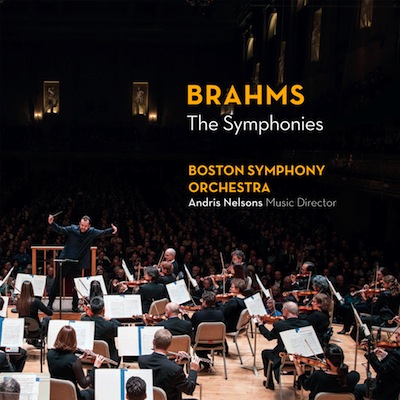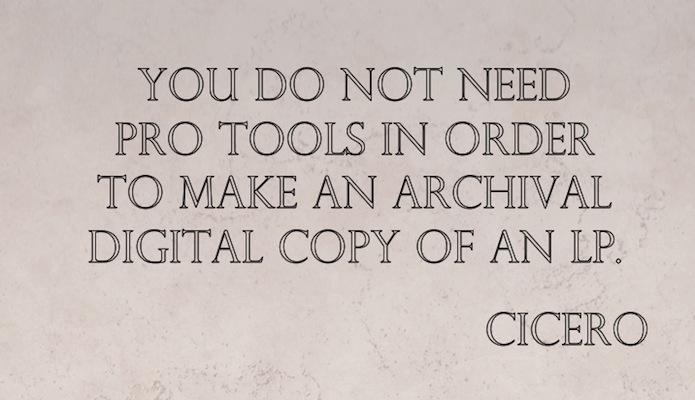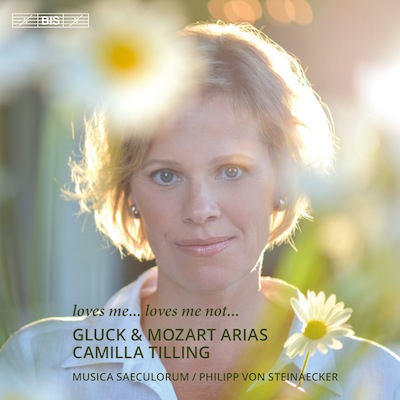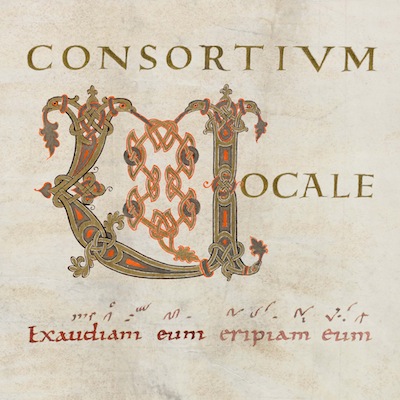
Month: April 2017
Sir Colin Davis: “Nimrod” from “Enigma Variations” (Elgar)
I am working on reviews of new-ish recordings of Edward Elgar’s two published symphonies, so, this video of Sir Colin Davis with an unidentified orchestra playing the slow variation from the “Enigma” Variations is timely. (My guess as to the identity of the orchestra is that it is the City of Birmingham Symphony Orchestra, judging by the façade pipes of the organ. I also deduce that the movement was played as an encore… .) I was privileged to hear Davis conduct Elgar’s masterpiece The Dream of Gerontius twice, twenty-five years apart, with the Boston Symphony Orchestra. There is no question that Davis was one of the most important Elgar conductors of the modern era. His live “Enigma” Variations recording with the London Symphony is available on SACD for only $14.99; the CD is $9.99. The “Enigma” Variations is one of those pieces that should be part of everyone’s cultural awareness.
# # #
Audio-Technica ATH-M50x Headphones

Berlin the Bear says, “Body-Shaking Bass!!!”
This is the sixth (and final) installment in my series about choosing Pareto-Optimal equipment to make archival digital copies of vinyl LP (long-playing) phonograph records. The first part (an overview) is here. Part 2 (Rega’s Planar 3 turntable package) is here. Part 3 (Graham Slee’s Revelation M phono stage) is here. Part 4 (a USB computer interface to handle analog-to-digital conversion) is here. Part 5 (software to make and edit a digital transfer of an analog LP) is here. This installment is about choosing headphones and monitoring loudspeakers for digitizing legacy media formats.
In much the same way that one cannot go wrong buying paint from Benjamin Moore (there probably are “better” paints; but, for most people and most uses, Benjamin Moore is the Pareto-Optimal choice), one cannot go wrong buying Audio-Technica’s ATH-M50x headphones. Their virtues include (as far as I know) class-leading sound in their very affordable price tier (in Basic Black, $149 with free shipping from B&H Photo); closed-back earcup design for two-way sound isolation; comfort; and robust construction.
Part of my calculus is that for the limited purposes of ripping and editing an LP, headphones (or monitoring loudspeakers) that are good enough, will be good enough. For an elaboration of that, and other headphone options and loudspeaker options, please click on the jump link. Continue Reading →
Sara Mingardo, Andris Nelsons, Lucerne Festival Orchestra: Brahms, Alto Rhapsody
Johannes Brahms’ Op. 53 Alto Rhapsody (1869) for female solo voice, male chorus, and orchestra neatly divides into three parts: Yearning, Striving, and Imploring Divine Aid.
Brahms wrote the Alto Rhapsody as a wedding present for Robert and Clara Schumann’s daughter Julie. One cannot help but think that Brahms chose Goethe’s craggy text as a self-portrait hiding a declaration of love.
The Alto Rhapsody has always been very well-represented on recordings. My fave rave is Dagmar Pecková with Jirí Belohlávek and the Prague Philharmonia, in a 2-CD set that includes some very fine Wagner and Mahler. Above we have a very fine version featuring Italian contralto Sara Mingardo with the Lucerne Festival Orchestra and (surprise, surprise) Andris Nelsons, rounding out our unofficial Andris Nelsons Brahms week here at The Tannhäuser Gate. This video is from a concert that includes Brahms’ Symphony No. 2 and Serenade No. 2. The DVD is here and the Blu-Ray here.
# # #
Brahms: The Four Symphonies; Boston Symphony Orchestra, Andris Nelsons

Brahms: The Four Symphonies
Boston Symphony Orchestra, Andris Nelsons
3-CD set and Downloads from BSO Classics
(Downloads are: 320 Kbs mp3; 24/96 AIFF; and 24/96 and 24/192 FLAC.)
Shawn Murphy, Producer and Engineer; Nick Squire, Recording Engineer; Robert Wolff, Editing Engineer; Tim Martyn, Editing Engineer and Mastering Engineer; Joel Watts and John Morin, Assistant Engineers; Brian Losch and Silas Brown, Production Assistants.
This review will be brief—but imperative. The official (so to speak) start of Andris Nelsons’ tenure as Music Director of the Boston Symphony Orchestra was a performance of the Overture to Richard Wagner’s Tannhäuser. The first CD I reviewed on this blog included that live recording, made the evening of September 27, 2014. (The other work on that CD is Sibelius’ second symphony, recorded later in Nelsons’ first season.) Furthermore, I named my blog after a Tannhäuser reference in the movie Blade Runner. So, all the breadcrumbs have been in plain sight; you should not be surprised that I am predisposed to be well-disposed to any and all new recordings from Andris Nelsons.
And it is not just this particular Humble Ink-Stained Wretch of the Fourth Estate who thinks the world of young Maestro Nelsons, either. Two CDs from Nelsons’ and the BSO’s ongoing Shostakovich series have won back-to-back Grammy awards in the category of Best Orchestral Performance. The BSO’s new 3-CD Brahms set is of that caliber.
By all means, you should click on the jump link for more detail, sound bytes, and some measure of justification. But the bottom line is: If the symphonies of Brahms are important to you, you should buy these CDs (or downloads), immediately. Taking into account interpretation, playing, and recorded sound, this set shoots right up into the top tier of recommendations in this music. Continue Reading →
Hairersoft Amadeus Pro 2 Editing and Mastering Software

This is the fifth (and the penultimate) installment in my series about choosing Pareto-Optimal equipment to make archival digital copies of vinyl LP (long-playing) phonograph records. The first part (an overview) is here. Part 2 (Rega’s Planar 3 turntable package) is here. Part 3 (Graham Slee’s Revelation M phono stage) is here. Part 4 (a USB computer interface to handle analog-to-digital conversion) is here. This installment covers software to make and edit a digital transfer of an analog LP.
In my immediately-previous installment, I tried to drive home the point that the kind of “computer audio interface” box that you can find at your local guitar-and-keyboards store is likely to have features you don’t need, while lacking features that you do need. This installment sings the same tune, but with different words.
You do not need the Pro Tools software suite in order to make an archival-quality digital transfer of an LP (or any other legacy sound-media format). (Neither do you need a lightning-fast tower computer with buckets of RAM.) Justifications, after the jump. Continue Reading →
Camilla Tilling: “loves me… loves me not…” (Gluck and Mozart opera arias)

Camilla Tilling: “loves me… loves me not…”
Opera arias by Gluck and Mozart.
Musica Saeculorum,
Philipp von Steinaecker, conductor
SACD BIS-2234
Camilla Tilling grew up on a farm in a rural part of Sweden. Her parents sang in the local church choir. Hearing her parents sing with the choir when she was about six years of age, she later recalled thinking, “Well, this isn’t difficult. I could do the same.” There you go!
I have to confess that Ms. Tilling had not been on my radar screen before I saw a listing for her new SACD from BIS. But one can infer from the stratospheric level of her appearances over the past few years that she has a marvelous voice. From her management’s website: “Fresh from performances of Mendelssohn’s Elijah with the Gewandhausorchester Leipzig and Thomas Hengelbrock, Tilling has a busy concert diary ahead including returns to Teatro alla Scala for Beethoven’s Missa Solemnis under Bernard Haitink, the Berliner Philharmoniker for Mahler’s Symphony No.4 under Sir Simon Rattle, and the New York Philharmonic for Beethoven’s Symphony No.9 under Alan Gilbert.” Also: Brahms’ German Requiem with Andris Nelsons (Boston Symphony), Christoph von Dohnányi (New York Philharmonic), and Bernard Haitink (Tonhalle-Orchester Zürich); Bach’s Matthew Passion with Sir Simon Rattle (Berlin Philharmonic); and Bach’s B-minor Mass with Philippe Jordan (Vienna Philharmonic). Whew!
More, and sound samples, after the jump. Continue Reading →
1,000 Years of Western Music History in 6 Tracks

I love to introduce people to pieces of music (or entire albums) I think should be parts of our shared cultural inheritance but which, for whatever reason, remain comparatively obscure. A prime example is Clifford Brown’s Clifford Brown With Strings. I also love to put together playlists that create a narrative arc (that’s fancypants-speak for, “tell a story”).
I was chatting with my friend Doug White, of the Philadelphia-area specialty high-end audio dealer “The Voice That Is.” The subject was the then-upcoming visit from John Atkinson, Jana Dagdagan, and Herb Reichert, all from Stereophile magazine. I volunteered to put together a playlist of high-resolution classical tracks that could do double duty as system-showing-off demo fodder while at the same time providing memorably engaging musical experiences. (Note, I think that the word “classical” is stretchy enough to encompass “Bridge Over Troubled Water.”)
I began sifting through my various lists of demo tracks. It soon became obvious to me that I could profitably fill just about one hour of listening by playing six tracks, all from the Norwegian audiophile label 2L. The tracks are in four parts: Two pairs of shorter tracks that share some aspects, and then two longer tracks from contrasting musical forces and genres. The gamut runs from a-cappella choral music through organ music and solo-piano music, ending with orchestral music. Continue Reading →


